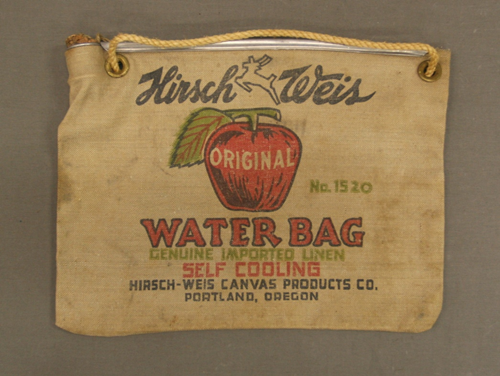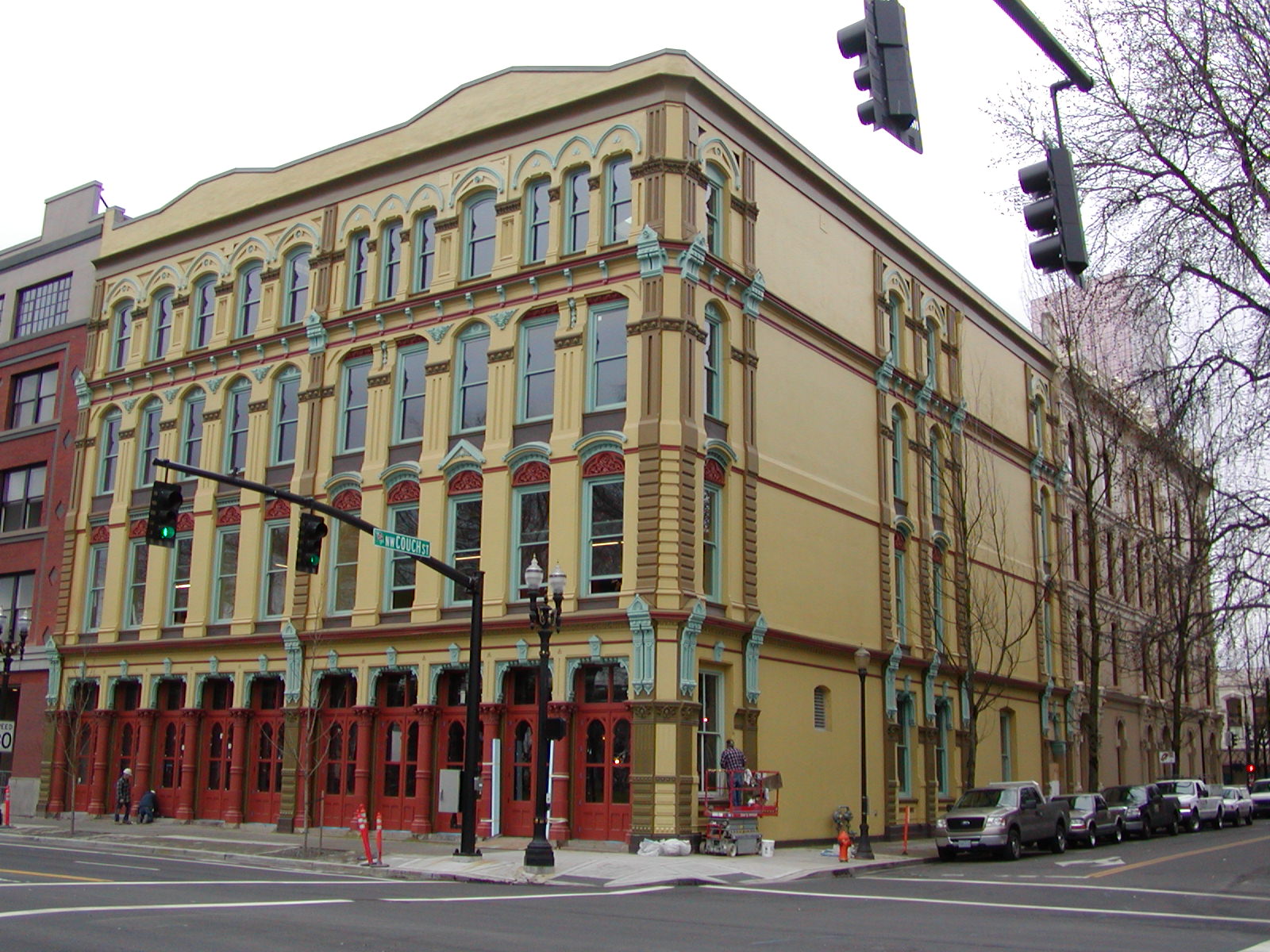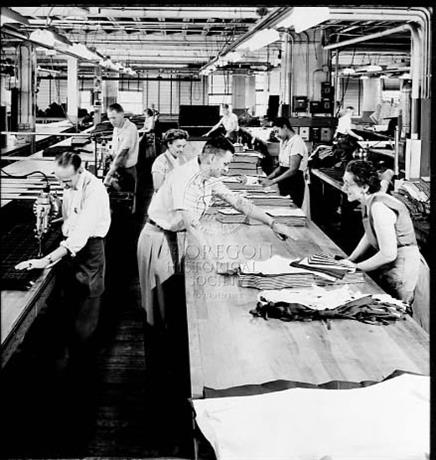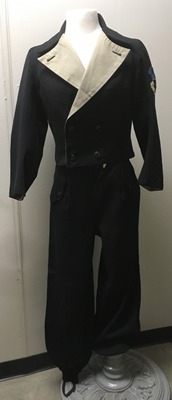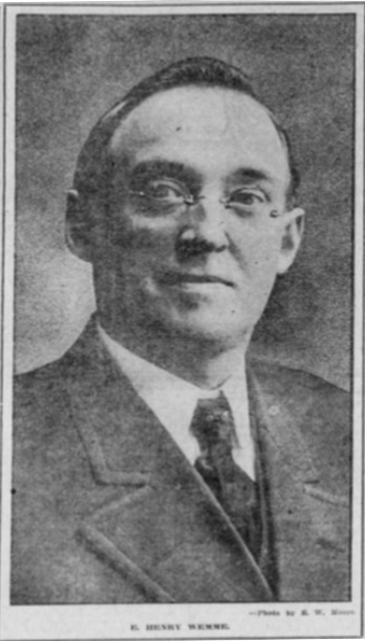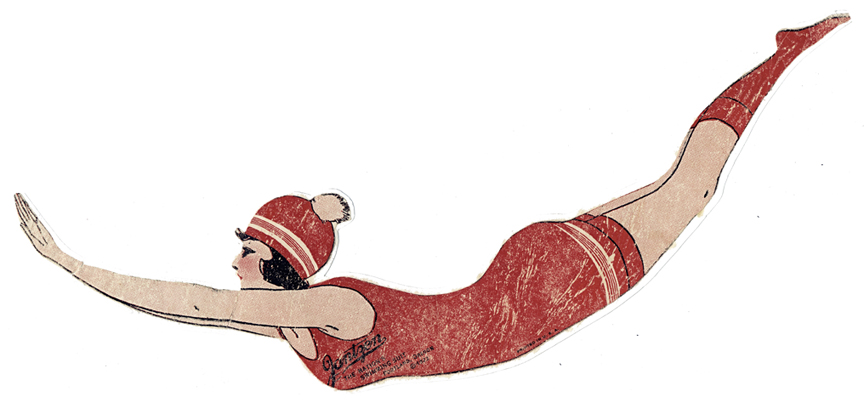The White Stag block is a renovated complex of environmentally friendly buildings in Old Town, Portland, which now houses the University of Oregon School of Architecture. The namesake White Stag building at 70 Northwest Couch Street, built in 1907, was originally known as the Hirsch-Weis building, after its owners Max and Leopold Hirsch and their partner Harry Weis. The Hirsch brothers and Weis used the building as manufacturing and warehouse space for their Willamette Tent and Awning Company, which made canvas materials and, later, clothes for mill and lumber workers.
In 1931, Max’s son Harold Hirsch (1908-1990) began a new venture. He had returned to the family business from Dartmouth College, where he was a member of the ski team. Sensing an opportunity, the young Hirsch used a corner of the family factory to make ski apparel. The name he chose was White Stag Sporting Goods, using the English translation of the German names Weis and Hirsch.
As outdoor recreation became more popular, White Stag broadened its line to other types of casual sportswear. From 1950 to 1958, sales rose from $4 million to $14 million a year, making it the country's largest retailer of ski clothing. By 1956, when the company went public, the Hirsch-Weis Manufacturing Company was renamed White Stag Sportswear.
White Stag was purchased by the Warner Brothers Company in 1966. A former corset and brassiere manufacturer, Warner Brothers had diversified its business in late 1950 to include men’s clothing and sportswear. The company went public in 1961 and renamed itself the Warnaco Group in 1968.
As part of Warnaco, White Stag moved its operations out of the Hirsch-Weis building in the 1970s and eventually moved out of Portland completely. Warnaco floundered in the 1980s, which led to a hostile takeover in 1986 and a corporate reorganization that spun White Stag off into part of a new company called Authentic Fitness Corporation. In 2003, Wal-Mart bought the White Stag trademark from the Warnaco Group for about $29 million, and its stores now carry a White Stag line of women’s apparel and jewelry.
The White Stag sign on the roof of the Hirsch-Weis building has an interesting history as well. The original 50-by-51 3/4-foot sign, with “White Satin Sugar” framed by a lighted silhouette of the state, was built in 1940 by Ramsay Signs to promote an Oregon sugar company. In 1957, White Stag placed its own brand in that space, adding a white deer leaping over the words “White Stag Sportswear.” At the suggestion of Harold Hirsch’s wife Elizabeth (1911-1999), the deer sported a red neon nose during the Christmas season.
The Naito family bought the Hirsch-Weis building in 1972, but the sign—and the holiday tradition—remained. Although the City of Portland designated the design of the White Stag sign a historical landmark in 1978, the designation does not preclude further changes to the sign. In 1997, the wording was changed to “Made in Oregon—Old Town,” linking it to a Naito business brand. Since November 2010, when the city took possession of the sign, it has read simply “Portland Oregon—Old Town.” The deer remains.
-
![]()
Water bag, Hirsch-Weis Canvas Products, c.1920.
Oregon Historical Society Museum Collection, 2001-55.1
-
![]()
Bickel Block, Portland.
Courtesy Building Oregon, University of Oregon. "Bickel Block (Portland, Oregon)" Oregon Digital -
![]()
Workers cut stacks of fabric to patterns in White Stag cutting room, 1954.
Oregon Historical Society Research Library, Oregon Journal, 006824
-
![]()
Young girl's wool dress and jacket, White Stag Manufacturing Co., c.1950.
Oregon Historical Society Museum Collection, 2009-9.4.1,.2
-
![]()
Ski jacket, pants and belt, White Stag Manufacturing Co., c.1940.
Oregon Historical Society Museum Collection, 2018-46.2.1,.2
Related Entries
-
![E. Henry Wemme (1861-1914)]()
E. Henry Wemme (1861-1914)
Ernest Henry Wemme is best known in Oregon history for being a successf…
-
![Gertrude Lamfrom Boyle (1924–2019)]()
Gertrude Lamfrom Boyle (1924–2019)
In her autobiography, Gert Boyle proffers “Ma Boyle’s Recipe for Succes…
-
![Jantzen]()
Jantzen
The history of Jantzen is in many ways the history of swimwear. In 1910…
Related Historical Records
Map This on the Oregon History WayFinder
The Oregon History Wayfinder is an interactive map that identifies significant places, people, and events in Oregon history.
Further Reading
White Stag Block Renovation and Architecture. University of Oregon.
“Commission designates White Stag sign Portland landmark." Oregonian, October 13, 1977, p. A17.
Paulson, Sara. "White Stag Catalog Cover." Oregon History Project, Oregon Historical Society.



